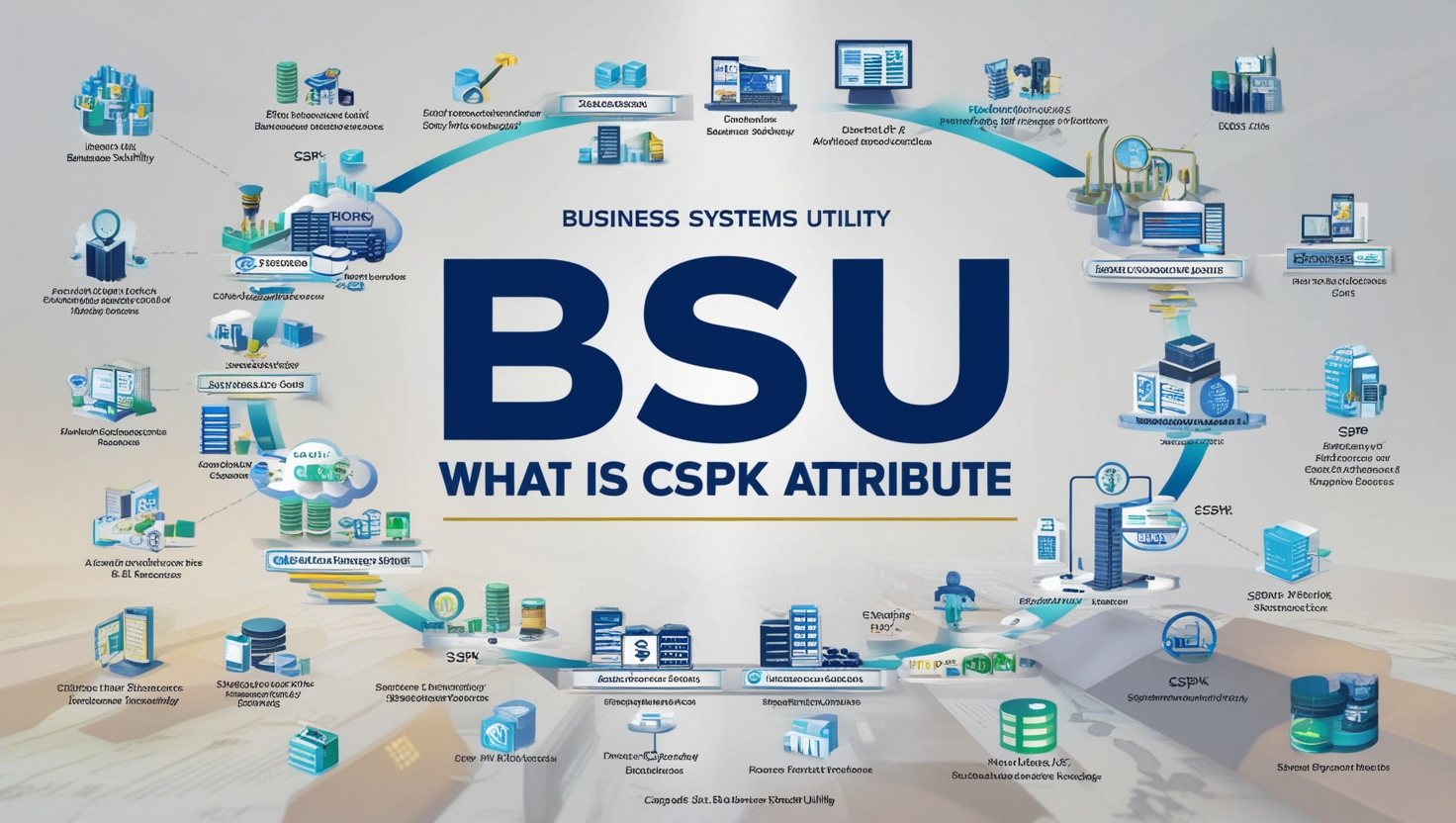In the digital age, organizations rely heavily on data management systems and frameworks to ensure efficient operations, maintain security, and optimize performance. Among these frameworks, the BSU (Business System Unit) and its components play a vital role in streamlining processes. Within this system lies a crucial feature known as the CSPK attribute, an essential element that defines specific functions and supports the core activities of a BSU. This article delves deep into understanding what the CSPK attribute is, its significance, and how it impacts modern systems.
What is BSU?
To grasp the concept of the CSPK attribute, it’s essential to first understand the Business System Unit (BSU). The BSU refers to a modular, structured system used by organizations to handle business-critical operations. A BSU integrates various subsystems and components that work together to support key business processes, such as financial transactions, resource planning, customer management, and supply chain logistics.
The primary goal of a BSU is to offer a seamless and efficient operational structure. It ensures that information is processed quickly, tasks are automated where possible, and the entire system is scalable and secure. The CSPK attribute is one of the vital parameters within the BSU framework that ensures these objectives are met.
What is the CSPK Attribute?
The term CSPK attribute may seem complex, but its essence lies in its ability to provide unique identification and classification within a BSU. The CSPK (Critical System Parameter Key) attribute is essentially a data attribute or identifier that represents a specific function, component, or data set within the BSU. Think of it as a unique fingerprint for critical elements in a business system.
Key Features of the CSPK Attribute:
- Identification: The CSPK attribute serves as a unique identifier for system components or data sets, ensuring there is no redundancy or overlap in the system.
- Classification: It categorizes data or processes, allowing for streamlined organization and efficient retrieval.
- Security: By acting as a critical identifier, the CSPK attribute helps enhance security by reducing the chances of unauthorized access to critical system parameters.
- Integration: It plays a vital role in integrating multiple subsystems, ensuring seamless communication and data flow.
For example, in a supply chain management system, the CSPK attribute might be assigned to key data sets such as inventory levels, shipment details, or supplier information. This attribute ensures that these data sets are easily identifiable and accessible without compromising security.
Importance of the CSPK Attribute in Modern Systems
The CSPK attribute is not just a technical detail—it’s a cornerstone of efficient and secure system operations. Here are some of the reasons why the CSPK attribute is significant:
1. Improved Data Management
In any large-scale business system, data plays a central role. Without a structured approach to organizing and managing data, the system can become chaotic. The CSPK attribute ensures that each data set or process is clearly defined, categorized, and accessible. This reduces redundancy, minimizes errors, and optimizes data handling.
2. Enhanced Security
Data security is a top priority in modern systems. By assigning a unique CSPK attribute to critical parameters, the system can better control access to sensitive data. Unauthorized users or applications cannot gain access without the proper credentials tied to the CSPK attribute, adding an extra layer of security.
3. Seamless Integration
Many organizations use multiple subsystems or software platforms to handle different aspects of their operations. The CSPK attribute acts as a bridge between these subsystems, enabling smooth integration and communication. For instance, a CSPK attribute might link a customer database with an order management system, ensuring that customer details are always synchronized.
4. Streamlined Operations
By clearly defining and identifying system components, the CSPK attribute helps eliminate bottlenecks in operations. Tasks can be automated more effectively, processes can be monitored in real-time, and overall system efficiency improves.
Applications of the CSPK Attribute in Business Systems
The CSPK attribute finds applications across a wide range of industries and business systems. Some of the key areas where it plays a crucial role include:
1. Enterprise Resource Planning (ERP)
In ERP systems, the CSPK attribute is used to classify and manage resources such as finances, human capital, and production schedules. This ensures that all resources are optimally utilized and tracked.
2. Customer Relationship Management (CRM)
CRM platforms often rely on CSPK attributes to manage customer data, track interactions, and identify key trends. The attribute ensures that customer information is secure yet easily accessible for authorized personnel.
3. Supply Chain Management
In supply chain systems, the CSPK attribute is used to track inventory, monitor shipments, and coordinate with suppliers. It ensures that all processes are synchronized and that critical data is always up-to-date.
4. Financial Systems
Financial systems use the CSPK attribute to manage sensitive data such as account details, transaction histories, and payment records. This not only enhances security but also simplifies compliance with financial regulations.
Challenges and Best Practices for Implementing CSPK Attributes
While the CSPK attribute offers numerous benefits, its implementation comes with certain challenges. For instance, assigning unique identifiers across a large-scale system can be complex and time-consuming. Additionally, improper handling of the CSPK attribute could lead to data inconsistencies or security vulnerabilities.
To overcome these challenges, organizations should follow best practices such as:
- Standardized Naming Conventions: Establish clear guidelines for creating and managing CSPK attributes.
- Regular Audits: Periodically review the system to ensure that CSPK attributes are correctly assigned and utilized.
- Training and Awareness: Train employees and system administrators on the importance of the CSPK attribute and how to handle it effectively.
- Robust Security Measures: Implement advanced security protocols to protect CSPK attributes from unauthorized access or tampering.
Conclusion
The CSPK attribute is a critical component of modern business systems, enabling efficient data management, enhanced security, seamless integration, and streamlined operations. By serving as a unique identifier for critical system parameters, the CSPK attribute ensures that organizations can operate more effectively in an increasingly digital and interconnected world.
Understanding and implementing the CSPK attribute within a BSU (Business System Unit) framework is essential for businesses looking to optimize their systems and stay competitive. With its wide-ranging applications and undeniable benefits, the CSPK attribute represents a key concept in the realm of business systems. By following best practices and embracing this feature, organizations can unlock new levels of efficiency, security, and success.










